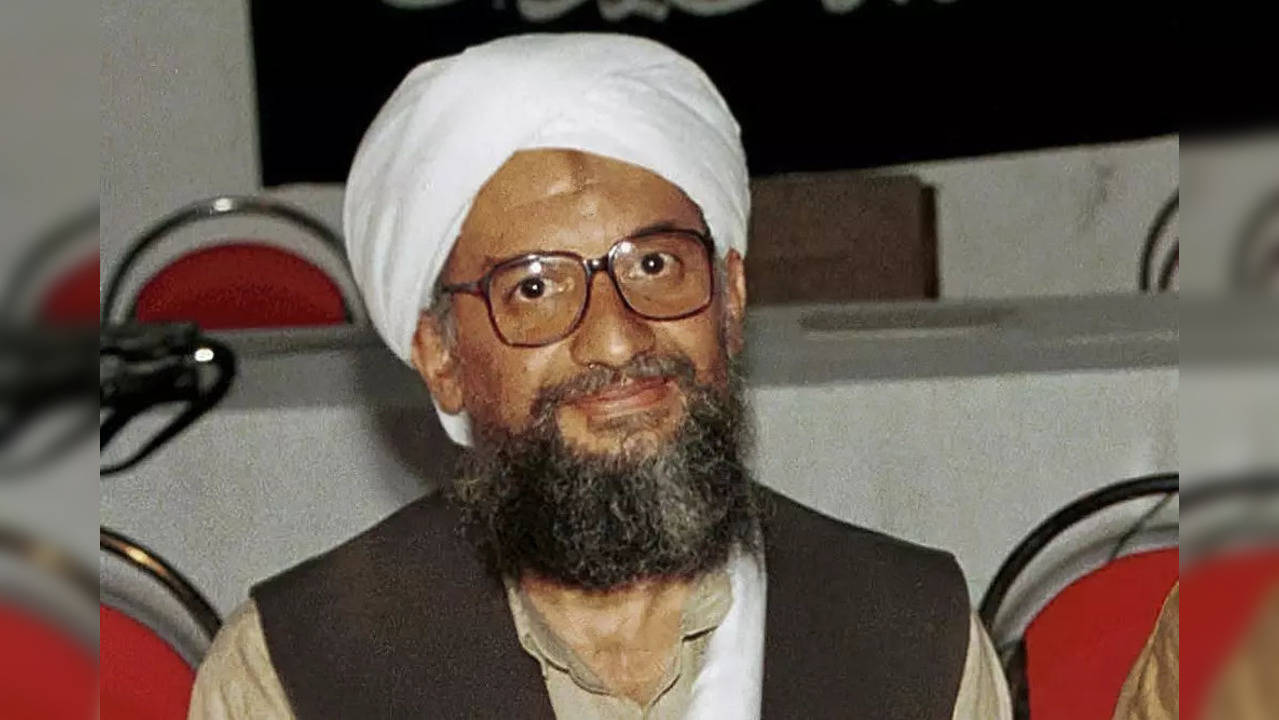Ayman Al Zawahiri's killing shows US needs a Pakistan long game
If US drones did in fact travel through Pakistan, possibly from a Gulf base, and not a Central Asian neighbour of Afghanistan, then the killing of Al Zawahiri not only proves the effectiveness of the US “over-the-horizon” counterterrorism strategy but also its reliance on Pakistani air space.

File picture: Ayman al-Zawahiri
Photo : AP
When news broke of the death of al Qaeda leader Ayman Al Zawahiri in Kabul by a US drone strike on July 31 , speculation soon began in neighbouring Pakistan over whether the drone that killed him took off from bases there or passed through the country’s air space.
US-Pakistan counterterrorism cooperation has been controversial since the early days of the War on Terror, triggering a backlash from Islamist politicians, Pashtun tribesmen, and formerly pro-state jihadist militants. It even fomented violent dissent from within the armed forces.
Today, America remains unpopular in Pakistan. Sentiment toward the US is a long way away from the days when prominent American visitors would be greeted enthusiastically by Pakistani crowds.
And though the US-Pakistan bilateral relationship – including counterterrorism cooperation – is far more reduced in scope, it has become entangled with Pakistan’s domestic politics in ways unlike before, potentially becoming a major electoral factor in Pakistan’s main urban centres.
When Prime Minister Imran Khan was deposed through a vote of no confidence in April, he alleged that he was brought down through a US “regime change” conspiracy, which he claimed was motivated by his firm opposition to allowing the US to operate military bases in the country.
Many in Pakistan see recent events – including the army chief's unusual call with a top US diplomat last week purportedly to secure quicker approval of the release of an International Monetary Fund (IMF) loan tranche – as evidence of collusion with the US in ousting Khan as part of a quid pro quo. Even an anti-Khan talk show host speculated that Pakistan allowed a “one-time” strike in exchange for help with the IMF.
Pakistan’s struggling economy could surely use all the help it can get. Official figures put inflation at around 25 per cent. The rupee has been in a free fall, losing around 24 per cent in value to the dollar since Prime Minister Shehbaz Sharif took power this April. And net foreign exchange reserves held by Pakistan’s central bank have fallen to USD 8.39 billion, covering under two months of imports. The deteriorating economy has substantially eroded public support for Sharif’s shaky coalition government.
For those keen on linking Pakistan’s economic and political turmoil to exogenous forces, there are plenty of dots to connect. Khan’s political troubles intensified in the early months of this year, just as the US discovered Al Zawahiri was in Afghanistan. And this summer, as the IMF adopted a tough posture in talks with Islamabad, the US intelligence community conclusively identified Al Zawahiri’s location in Kabul.
What may simply be coincidental is proof for some of the US orchestrating Khan’s removal and using various levers of influence to ensure it has the unimpeded ability to strike high-value targets in landlocked Afghanistan using Pakistan’s air space. The widely-held belief that Khan was the victim of a US conspiracy feeds into his popular support, increases the likelihood that he could return to power, and complicates America’s counterterrorism strategy in the region.
It’s very likely that the Al Zawahiri strike – and surveillance before and after the attack – involved the use of Pakistani air space. Indeed, a US congressman has said that Pakistan has given “tacit approval” to overflight rights.
Now, if US drones did in fact travel through Pakistan, possibly from a Gulf base, and not a Central Asian neighbour of Afghanistan, then the killing of Al Zawahiri not only proves the effectiveness of the US “over-the-horizon” counterterrorism strategy but also its reliance on Pakistani air space.
If the US is indeed dependent on Pakistan to surveil and strike targets in Afghanistan, its counterterrorism strategy in Afghanistan is potentially jeopardised by the return of Khan to power through elections within the next year. It’s vital that the US and Pakistan develop a counterterrorism cooperation framework that can withstand political pressures in Pakistan in the short term.
Toward this, the US should maintain a restrained, focused counterterrorism strategy, quietly partnering with Pakistan without having bases in the country (if it hasn’t already). Drone strikes, like President Bill Clinton used to say of abortion, should be “safe, legal, and rare". The two countries should also ramp up intelligence sharing on shared threats, including al Qaeda and the local branch of ISIS.
But Washington must also prepare for the potential return of Khan to power. It should resist the urge to demonize him as a kind of Hugo Chavez-style populist strongman and pariah. And it must avoid supporting – wittingly or otherwise – anti-democratic moves to keep him out of power. Doing so would put America at loggerheads with the Pakistani street.
Pakistan may be poor. And its economy is in crisis. But it is no tiny country. The US simply cannot get locked into a battle with a populist leader in the world’s fifth-most populous country.
Both sides should seek a credible off-ramp should Khan return to office. But in the end, he may not allow even very limited US drone overflight rights. And that is a reality the US must be prepared to accept. It would be Khan’s prerogative as the leader of a sovereign country.
In arrangement with Syndication Bureau
Arif Rafiq is a guest contributor. Views expressed are personal.
Trending:
End of Article
Subscribe to our daily Newsletter!
Related News





Sadhguru Lists 5 Things To Remember When You Vote

Why Politicians Make Excellent Social Media Content Creators

China’s Military's Agenda

Opinion | Gender Justice In AI Isn't Just About Fairness; It's A Strategic Call For India

Elections And Safety: The Role Of Candidate Selection In Addressing Crime Against Women In West Bengal









